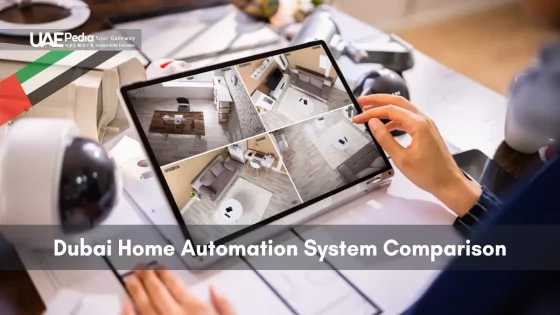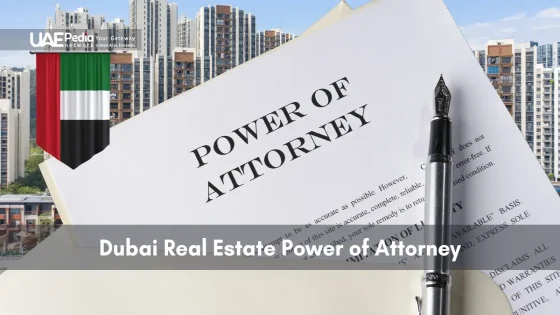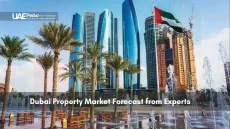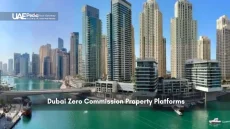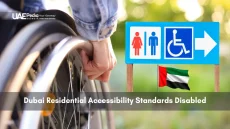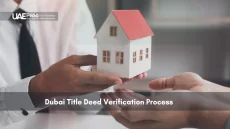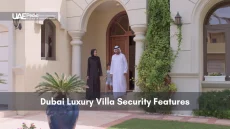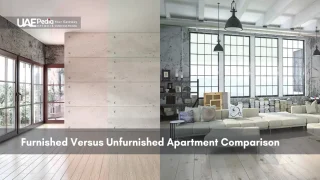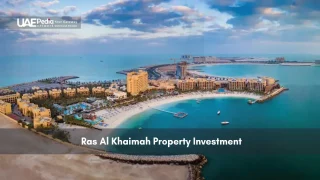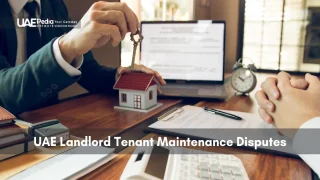What if a single phrase spoken decades ago could unlock doors for thousands today? “A nation’s true wealth lies in its people,” declared Sheikh Zayed Al Nahyan—words now echoing through sun-drenched skylines and desert-edge communities. This guiding principle fuels transformative projects reshaping where and how residents live.
From Bedouin trading routes to glass towers, the Emirates’ property journey mirrors its rapid evolution. Early investments in infrastructure laid foundations, but recent years brought seismic shifts. The Dubai Real Estate Strategy 2033 aims to double the sector’s GDP contribution beyond its current 19.2%—a target driven by policies prioritizing accessibility over exclusivity.
Today’s market thrives on creative solutions: lease-to-own programs, tech-powered registration systems, and partnerships bridging public-private gaps. These moves aren’t just about buildings—they’re about creating ecosystems where families grow and entrepreneurs thrive. Think less red tape, more opportunity.
- Legacy meets innovation: Historical values steer modern housing solutions
- Economic engine: Property now rivals oil as a GDP contributor
- Access redefined: New pathways simplify ownership across income levels
Government Vision and Historical Context of UAE Real Estate
Picture this: endless dunes dotted with tents transform into glittering skylines within a single generation. That’s the story written by leaders who saw beyond oil rigs and trade routes. Their blueprint? Create thriving communities where sand meets steel.
Legacy of Visionaries and Real Estate Foundations
Early architects of progress didn’t just build towers—they crafted ecosystems. Take Dubai’s Creek Harbour in the 1960s: a modest port reimagined as a global trade hub. This pivot sparked a chain reaction. By 1985, Jebel Ali Free Zone became a template for mixing commerce with community spaces—a radical idea at the time.
Fast-forward to today’s D33 strategy. Dubai aims to rank among the world’s top three urban economies by 2033. How? By doubling down on mixed-use neighborhoods and tech-driven property management. These moves echo a core truth: stability grows when people plant roots.
Transformation from Oil-Driven to Diverse Investments
Crude oil once fueled 90% of the economy. Now? Real estate contributes over 19% to GDP. The shift began with bold moves like Abu Dhabi’s 2008 Economic Vision 2030—a plan to reduce oil dependency through smart infrastructure bets.
Innovation became the new currency. Think blockchain land registries and green building codes. These aren’t buzzwords—they’re tools reshaping where families live and work. Over 35% of current developments target mid-income residents, proving luxury isn’t the only game in town.
Strategic Government Programs for Expanding Affordable Housing
Keys to homeownership are being handed out like never before—thanks to bold policy shifts. Let’s unpack the game-changers making property investment accessible while fueling smarter urban growth.
Golden Visa and Foreign Ownership Reforms
Ever heard of a residency permit that doubles as a property passport? The Golden Visa does just that. Launched under Mohammed bin Rashid Al Maktoum’s leadership, it grants 10-year residency to investors in select developments. Over 150,000 applicants since 2019 prove its magnetic appeal.
| Program | Benefit | Eligibility |
|---|---|---|
| Golden Visa | Long-term residency + property ownership | Invest AED 2M+ |
| Freehold Areas | Full foreign ownership | Available in 23+ zones |
| Mid-Income Developments | Below-market rates | Salaried professionals |
Residential Projects Targeting Mid-Income Residents
Developers now craft communities where teachers, nurses, and engineers thrive. Take Town Square Dubai—4,500 townhouses with parks and schools at 20% below market rates. Or Yas Acres in Abu Dhabi, where payment plans stretch over six years.
Sustainability threads through these projects. Solar panels, recycled water systems, and carpool apps aren’t extras—they’re standard. One project even plants a tree for every unit sold, merging green living with smart design.
uae affordable housing initiatives government – Key Support Schemes and Eligibility
Imagine holding keys to a home tailored to your budget—no magic lamp required. Let’s unpack the systems making this possible for working professionals and long-term investors alike. From streamlined paperwork to payment plans, here’s how to navigate the process like a pro.
Who Qualifies and What You’ll Need
Eligibility hinges on three pillars: income level, residency status, and property type. Teachers earning AED 15k monthly? Check. Entrepreneurs with 2+ years in-country? Double-check. Essential documents include:
- Valid passport & Emirates ID copies
- Six-month salary certificate or audited business profits
- Pre-approval letter from participating banks
Take Rasha’s story—a nurse who secured her Dubai studio through the First Home Advantage program. Her secret? Submitting bank statements showing consistent savings. “The portal flagged missing documents instantly,” she recalls. “Three clicks later, everything uploaded.”
Payment Plans That Bend Without Breaking
Gone are the days of 50% down payments. Current options let you:
| Program | Down Payment | Term | Perk |
|---|---|---|---|
| First-Time Buyer | 15% | 25 years | Fixed 3.5% rate |
| Investor Advantage | 20% | 15 years | Rental income offset |
Experts suggest aligning repayment schedules with salary cycles. “Choose post-dated cheques if your bonus comes quarterly,” advises mortgage consultant Layla Al-Mansoori. Some developments even offer construction-linked plans—pay as each building phase completes.
These frameworks aren’t just about roofs overhead. They’re blueprints for communities where multiple generations put down roots while investors find stable returns. Quality life? That’s baked into the design—parks within walking distance, schools around the corner, and tech that tracks your application’s real-time status.
Innovations in Property Development and Real Estate Fintech
Ever bought a house in under 10 minutes? That’s the new reality as tech rewrites the rules of property deals. From blockchain-powered contracts to AI-driven community planning, these tools aren’t just flashy—they’re reshaping how we create and access homes.
Blockchain Tokenization and PropTech Integration
Imagine owning a slice of a luxury villa like trading stocks. Blockchain makes it possible through fractional ownership tokens. Dubai’s Land Department piloted this in 2023, cutting paperwork from weeks to hours. One project sold 40% of units via digital tokens within days—proof that security and speed attract modern buyers.
| Traditional Process | Blockchain Solution | Time Saved |
|---|---|---|
| Manual document checks | Smart contract verification | 83% faster |
| Single-party ownership | Tokenized shares | 50% lower entry cost |
| In-person notarization | Biometric digital signatures | Zero office visits |
Collaborations Driving Regulatory Excellence
Tech startups and regulators now co-create the rulebook. Take the REACH program—a sandbox where PropTech firms test ideas alongside officials. Their first win? A unified portal for license approvals, cutting wait times from 30 days to 72 hours.
“We’re building guardrails for innovation,” says Amina Al-Ketbi, CEO of a real estate fintech startup. Her team’s AI tool predicts community needs—like grocery stores before residents move in. These partnerships prove tech isn’t replacing humans—it’s helping us design smarter life spaces.
From construction workers tracking materials via IoT sensors to families voting on playground designs through apps, every layer gets smarter. The result? Communities that grow with their people—not just around them.
Impact on Residents, Communities, and Economic Growth
Communities thrive when front doors open to families, not just investors. Consider Abu Dhabi’s recent boom—mid-income property sales jumped 34% last year, while rental prices in family-friendly zones climbed 11%. These numbers tell a story of neighborhoods buzzing with new energy.
Keys That Unlock More Than Doors
Take Yasmina, a teacher who bought her first apartment through the Thrive Together program. “My daughter’s school is three blocks away,” she says. “We’ve got parks, clinics, even a makerspace downstairs.” Developments now prioritize shared spaces—community gardens, co-working hubs, and playgrounds that become social glue.
Investors Betting on Neighborhood Vibrancy
Local businesses ride the wave too. When 500 families moved into Reem Island’s latest project, café owners saw a 40% sales bump. Developers report that mixed-use spaces—retail below residences—attract 25% higher investor interest than standalone towers.
| Indicator | 2022 | 2023 |
|---|---|---|
| Mid-Income Sales (AED) | 2.1B | 3.4B |
| New Retail Licenses | 890 | 1,240 |
| Community Events Hosted | 76 | 142 |
This isn’t just about four walls and a roof. It’s about creating worlds within cities—spaces where careers blossom, friendships form, and cultures mix. As one bakery owner put it: “When people stay, they become regulars. When they’re regulars, we all grow.”
The ripple effects position the region as a blueprint for balanced urban growth. From schoolteachers to startup founders, everyone gains footing in a market designed for lasting impact.
Affordable Housing Initiatives in Abu Dhabi and Ras Al Khaimah
What do a coastal innovator and a desert planner have in common? Both emirates craft living spaces reflecting their unique landscapes. While Abu Dhabi focuses on strategic urban expansion, Ras Al Khaimah (RAK) weaves affordability into community DNA. Let’s explore how these neighbors build homes that mirror local rhythms.
Abu Dhabi’s Value Housing Programme and Market Trends
The Value Housing Programme acts like a matchmaker—connecting mid-income professionals with homes near transit hubs. Over 4,800 units launched since 2022 cluster around Mohammed Bin Zayed City, where metro access slashes commute times. Developers partner with banks to offer rates 18% below market averages.
Current trends show a shift toward life-ready designs. Think less cookie-cutter towers, more townhouses with shared gyms and co-working lounges. “We’re creating ecosystems, not just apartments,” notes a project manager at Al Reef Villas. Their latest phase sold out in 48 hours—proof that smart layouts trump square footage.
| Emirate | Focus Area | Key Features | Target Demographic |
|---|---|---|---|
| Abu Dhabi | Urban connectivity | Transit-linked locations | Mid-income professionals |
| RAK | Community integration | Local business partnerships | Families & entrepreneurs |
RAK’s Community-Centric Affordable Housing Projects
RAK flips the script by putting neighborhood bonds first. Their Al Hamra District blends Emirati heritage with modern needs—think majlis-style common areas and pop-up markets run by residents. Payment plans here stretch up to eight years, letting families grow into ownership.
New projects like Jebel Jais Living prove affordability doesn’t mean compromise. Solar-powered studios start at AED 450k, with mountain trails replacing concrete jungles. A local café owner shares: “When people put down roots, my customer base becomes family.”
Embracing a Sustainable Future in UAE Living
Imagine communities where rooftops grow vegetables and sidewalks generate solar power—this isn’t sci-fi. It’s the blueprint taking shape across the Emirates. Architects now weave sustainability into every brick, with developments prioritizing energy efficiency and social connectivity.
Passive cooling systems slash AC costs by 40% in new builds. Recycled materials form playgrounds, while smart meters teach families to track consumption. These aren’t just eco-features—they’re essentials for neighborhoods built to thrive through coming decades.
The region’s growth hinges on balancing innovation with inclusion. Upcoming projects like Dubai’s Sustainable City 2.0 promise carbon-neutral living for 5,000 residents. Rooftop gardens? Check. Electric shuttle networks? Double-check. Even expats find options matching global standards without premium price tags.
Forward-thinking policies fuel this shift. Strategic plans mandate green spaces in 85% of new developments. Tax incentives reward builders who exceed energy benchmarks. It’s a collaborative dance—developers, residents, and leaders co-creating spaces where economic resilience meets community well-being.
This journey isn’t about quick fixes. It’s about planting seeds for generations. From solar-powered schools to neighborhoods that adapt as families grow, every choice echoes a simple truth: the best homes don’t just shelter people—they nurture possibilities. Ready to join the evolution?
The Golden Visa grants long-term residency to professionals and investors, creating stability that encourages property investment. Paired with foreign ownership reforms in areas like Dubai Hills, it’s opened doors for expats and residents to access mid-tier housing markets with confidence.
Abu Dhabi’s Value Housing Programme targets households earning between AED 15,000 to AED 35,000 monthly. Applicants need Emirates ID, salary certificates, and proof of employment—streamlining access for working families seeking quality homes without overspending.
Absolutely! Projects like Ras Al Khaimah’s Hayat and Hayyan blend affordability with sustainability. Solar-powered streetlights, recycled water systems, and green spaces showcase how eco-innovation is woven into community design, reducing living costs while protecting the environment.
Yes—banks like ADCB and Emirates NBD offer expat-friendly plans with flexible down payments as low as 15%. Recent fintech partnerships also use AI to speed up approvals, making financing accessible even for first-time buyers without extensive credit history.
Dubai’s “Blockchain Strategy” digitizes contracts and land registries, cutting paperwork and fraud risks. Tokenized assets let buyers securely purchase fractional ownership in developments—ideal for those entering the market with smaller budgets but big aspirations.
Collaborations between entities like Aldar Properties and government agencies drive mixed-use projects. These combine retail, schools, and clinics alongside homes—creating vibrant, self-sufficient neighborhoods where families can thrive without sacrificing convenience or community ties.

